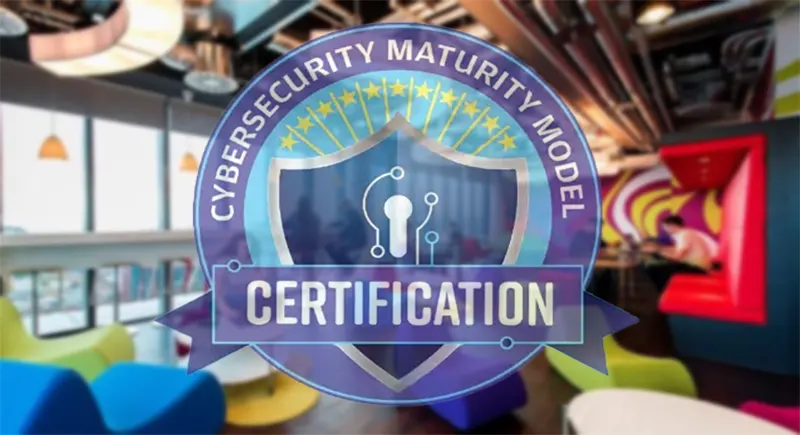There’s a side of cybersecurity that rarely gets enough attention: the people behind the protocols. While firewalls and encryption grab headlines, it’s the daily behavior and mindset of employees that quietly shape whether a company sails through a CMMC assessment or stumbles. Company culture might not show up on a checklist, but its impact runs deep—especially under CMMC compliance requirements.
Embedding Cyber Hygiene in Employee Daily Practices
Cybersecurity habits aren’t just policies—they’re everyday actions. Clicking suspicious links, ignoring software updates, or writing passwords on sticky notes can undo even the strongest tech setup. Organizations chasing CMMC level 1 requirements often overlook how frequently security lapses stem from routine shortcuts, not major breaches. That’s where culture steps in. If employees see cybersecurity as part of their role, not just IT’s job, it becomes second nature.
Leaders can spark this shift by making small tasks matter. A weekly reminder to update devices, internal shout-outs for spotting phishing attempts, or quick trainings on secure behavior go further than thick manuals. It’s the difference between compliance as a burden and cybersecurity as a habit. That attitude is what evaluators see during a CMMC assessment—whether staff walk the talk.
Cultural Alignment as the Foundation for Compliance
An aligned culture removes the friction between what’s expected and what actually happens. Teams that understand why CMMC compliance requirements exist tend to follow them with more care. It’s easier to adopt secure workflows when they don’t feel forced or disconnected from real work. That’s especially key for organizations preparing for CMMC level 2 requirements, where stricter controls require consistent behavior.
A strong cultural backbone also supports smoother coordination with a C3PAO. Instead of scrambling to gather documentation or fix lapses before the assessment, companies with a unified mindset already have processes running in sync. This readiness can’t be faked—culture makes it sustainable. Policies stick better when people actually believe in them.
Human-Centric Security Awareness Beyond Technical Controls
Technology handles a lot, but it can’t think for people. Training employees on secure practices is good, but shaping how they see security is better. Instead of just teaching rules, organizations can emphasize the why behind them. That shift encourages thoughtful decision-making. Clicking a sketchy link or storing files insecurely isn’t just breaking protocol—it’s risking the mission.
Cybersecurity awareness that taps into personal responsibility, team trust, and mission protection feels real. That human connection carries weight during a CMMC assessment. It shows up in interviews, responses, and behavior under observation. Assessors know the difference between memorized answers and a team that lives by the policies.
Behavioral Consistency Reduces Assessment Vulnerabilities
One-off efforts don’t help much. Consistent actions across departments do. If one team locks down its systems but another stores passwords in shared spreadsheets, gaps appear fast. These inconsistencies are what a C3PAO notices during an audit. Reliable habits reduce exposure—and stress.
Small, repeatable behaviors build trust. Whether it’s locking screens, following approved access procedures, or reporting suspicious activity without delay, consistency makes compliance predictable. It removes the risk of fluke mistakes sinking an otherwise strong CMMC assessment. A culture where everyone follows the same rhythm is harder to trip up.
Leadership Commitment Drives Secure Operational Habits
● Leaders who demonstrate secure behavior set the tone
● Cybersecurity priorities must be backed with visible executive support
● Accountability trickles down when leaders speak the same language as the security team
A memo from the top isn’t enough. Teams watch what leaders do. If executives attend security briefings, participate in role-based training, and follow access protocols, it signals that cybersecurity is serious—not optional. This visible commitment influences how others behave.
Culture starts at the top, and under CMMC level 2 requirements, that visibility becomes more important. Auditors notice who champions compliance. Leadership actions can reinforce trust and encourage everyone to engage with security standards—not just follow them out of obligation.
Integrating Accountability into Organizational Mindset
● Tie security to performance reviews and role expectations
● Normalize reporting of mistakes or vulnerabilities without fear
● Encourage teams to own parts of the compliance process
Accountability doesn’t have to be harsh—it just has to be clear. Teams should understand their role in compliance, from managers down to frontline staff. Instead of siloing responsibility within IT, smart organizations distribute ownership. That builds resilience.
CMMC compliance requirements expect repeatable, tracked actions. Without a shared sense of responsibility, things slip through the cracks. A company that embraces accountability makes fewer assumptions and stays audit-ready by design, not by emergency.
Security-Conscious Collaboration Enhances Assessment Readiness
Cybersecurity isn’t a solo department effort—it’s teamwork. Collaboration between departments helps spot blind spots early. Whether it’s HR aligning onboarding practices with access protocols or finance following secure invoice handling, secure communication builds stronger systems.
This cooperative mindset makes a big impression during a CMMC assessment. Cross-functional collaboration shows that cybersecurity isn’t an afterthought—it’s part of how the business runs. From technical to administrative staff, a united front signals that the entire organization treats compliance seriously. That’s what a C3PAO looks for—evidence that people work together to keep data protected.











